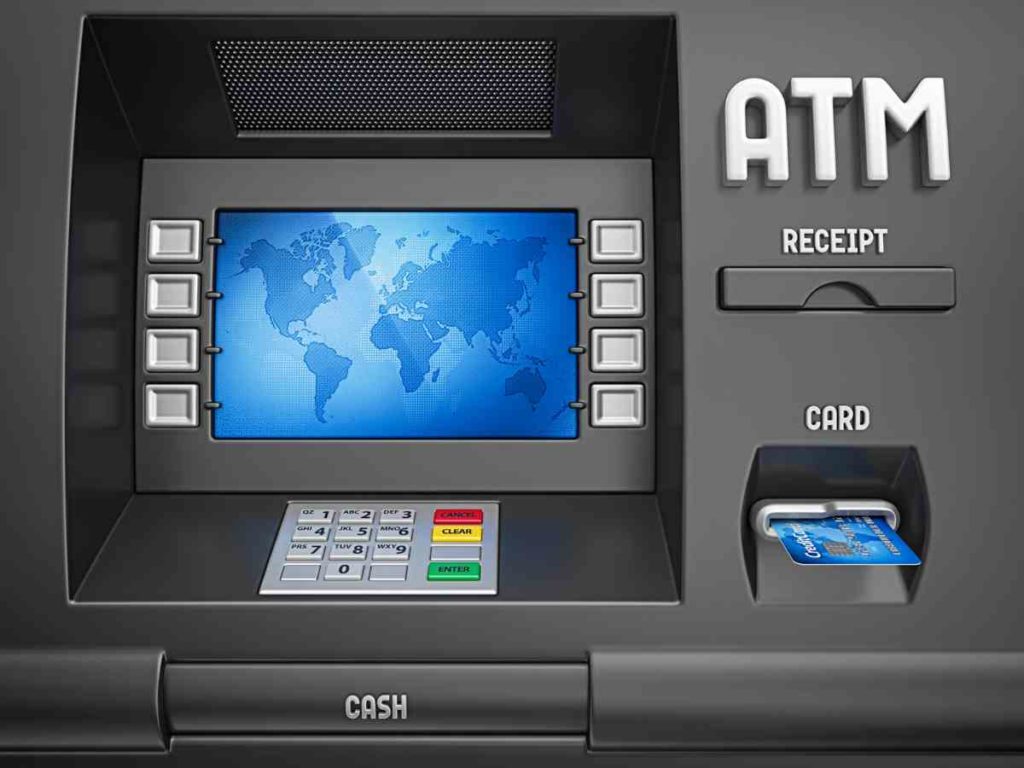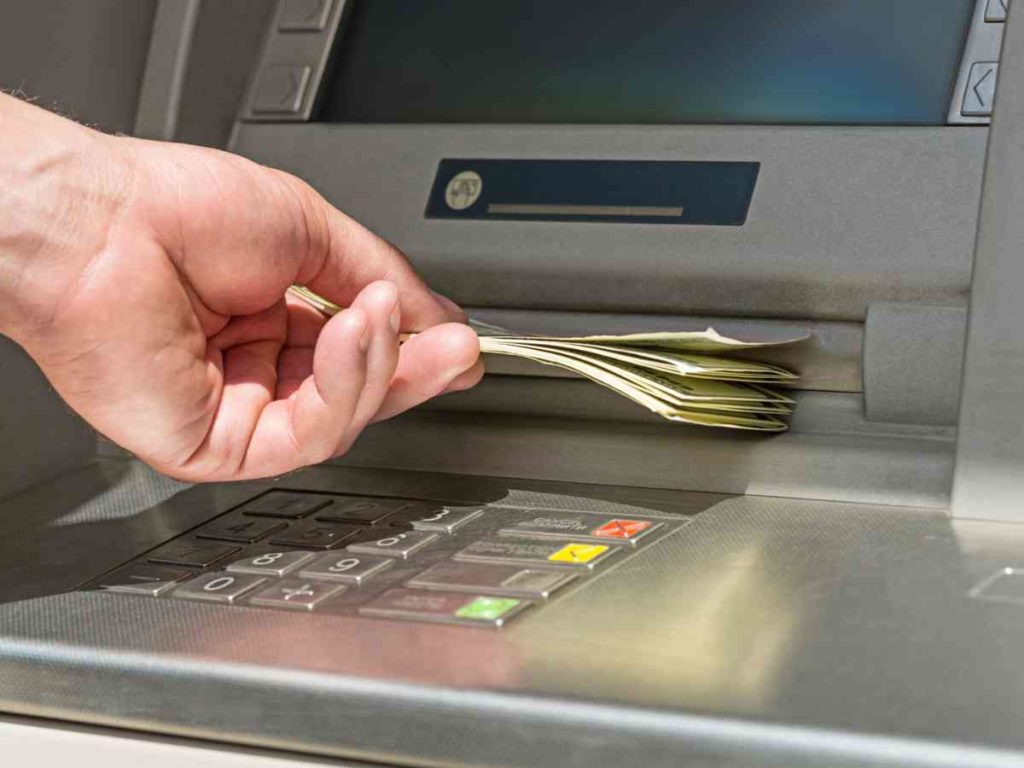What is ATM Business?

An ATM business is a lucrative business opportunity that allows you to own and operate an ATM machine. With an ATM business, you are able to provide people with a convenient way to access their cash needs. The benefits of owning your own ATM business are numerous.
You can make a steady income, establish a passive revenue stream, and increase customer foot traffic for any business that has your machine on site. To get started, you will need to obtain the necessary permits and licensing, purchase the ATM machine, and ensure that it is properly installed and maintained.
You will need to establish relationships with banks in order to ensure that the ATM is stocked with cash. Once you have completed these steps, you can begin to enjoy the benefits of your new ATM business.
Understanding the ATM industry

The Automated Teller Machine (ATM) industry is a highly complex and rapidly changing sector. As technology advances, so do the needs of customers, and it is vital that the industry keeps up with the latest developments. To understand the ATM industry, it is important to familiarize oneself with its many components.
From the hardware and infrastructure to the software and services, there are many areas that must be taken into account. For example, ATMs must be able to communicate with banks in order to receive and send money, and also be equipped with security measures to protect customers’ data. It is also necessary for the machines to be able to handle different types of currency.
The software must provide customers with a user-friendly experience, as well as enable banks to monitor their ATMs remotely. Additionally, the industry must remain compliant with regulations in order to ensure that customers receive services of the highest quality.
Understanding all of these factors is essential for companies that are looking to break into the ATM industry. With technology advancing at a rapid pace, it is more important than ever for companies to stay informed about developments in the ATM industry in order to remain competitive.
How to Choose the right ATM machine?

Step 1 Consider the fees associated
When making financial decisions, it’s important to consider all of the associated fees and costs. This is especially true when investing and managing your money. Before investing, make sure you understand the fees associated with the investment product.
Many investment products come with a variety of fees, ranging from setup fees and administrative fees to management fees and performance-based fees. Setup fees are one-time fees charged when you open an account. Administrative fees cover the costs associated with running the account, such as record keeping and custodial services.
Management fees are charged for the services of a professional manager, who oversees the investment account. Performance-based fees are charged when a portfolio or asset achieves a certain level of performance or return on investment.
It is important to be aware of all these fees so that you can make informed decisions about your investments. Doing research ahead of time can help you make sure that you get the best value out of your investments.
Step 2 Research the security features
When it comes to online security, it is essential to research the security features that a website offers. Knowing what tools are available to protect your data is key. It’s important to look out for websites that make use of HTTPS, which is a secure protocol that encrypts the data being sent between the user and the website.
Make sure that the website has an SSL certificate, as this is an additional layer of security which helps secure sensitive information. Two-factor authentication is also an important security feature to look out for as it requires two pieces of information when logging in, adding an extra layer of protection for your account. Additionally, it’s worth checking if the website offers encryption for data stored on their servers.
All of these features are essential to ensure your personal data is kept safe and secure from potential malicious actors. Researching the security features of a website can help you make sure your data remains secure and private.
Step 3 Check for compatibility with your banking software
Ensuring that your banking software is compatible with the new accounting program you have chosen is essential for a successful integration. Before you invest in a new software, it is important to confirm that it will work with your existing banking system. To check compatibility, you should start by researching the software’s website to see if they list any banking systems they are compatible with.
You can reach out to the customer support team to inquire about banking compatibility. If the software does not list any compatible banking systems, you can also ask customer support if they have tested their software with any of the popular banks. Once you have established compatibility, you can move forward with the installation process.
It is important to note that some banking systems may require additional setup or configuration steps before they will be compatible with your new accounting software.
Make sure to follow all of the provided instructions for a successful integration. With a bit of research and effort, you can guarantee that your new accounting software is fully compatible with your existing banking system.
Step 4 Check for customer service quality
Customer service quality is an important factor to consider when evaluating any business. It’s essential to be aware of the customer service quality of a company in order to ensure that your needs are being met. To do this, there are a few key steps you can take. Look for customer reviews and testimonials online. This will give you an idea of how the company handles customer service.
Ask questions when you reach out to the company. This will give you a better understanding of the level of quality they provide and their commitment to customer satisfaction.
When speaking to customer service representatives, pay attention to how quickly they respond and how helpful and knowledgeable they are. Taking these steps will help you make an informed decision about whether or not a company offers quality customer service.
Step 5 Look into scalability
Scalability is an important factor to consider when building a business. It ensures that as your company grows, your infrastructure can support it and is flexible enough to accommodate new needs. To look into scalability, you should start by assessing the current status of your organization and its resources.
Analyze the potential for growth and the capacity of your infrastructure to handle an increase in workload. Consider whether current systems are able to handle more data or if more powerful technology is needed.
Review the operating costs associated with scaling up and determine whether you need to invest in more manpower or additional software. Once you’ve determined the current and future capacity of your organization, you can begin to look into scalability solutions that meet those needs. Research various technologies and decide which ones are most likely to provide the scalability you need.
Build a plan that outlines how your organization will transition to the new system, taking into account any additional costs and resources needed. With thoughtful planning and smart investments, you can ensure that your business is prepared for future growth.
Step 6 Do a background check on the vendor
Doing a background check on your vendor is an important step in the process of conducting business. It is essential to ensure that the vendor you are considering is reliable, trustworthy and has a proven track record of delivering quality products or services. It can also give you valuable information about their financial stability and can provide insight into their reputation in the industry.
By taking the time to do a background check, you can make sure that you are working with a vendor who has the right skillset and resources to meet your needs. To do a background check, start by researching the vendor’s history, including their past work experience, previous clients, and any awards or accolades they have received.
You can also use websites such as Better Business Bureau and Angie’s List to read customer reviews. It is important to contact references provided by the vendor or speak to other professionals in your industry who have worked with them before. Doing a thorough background check on a vendor can help you make an informed decision when choosing who to work with.
Legal requirements and regulations of ATM Business

1. Obtain proper licensing from the relevant regulatory body
Obtaining proper licensing from the relevant regulatory body is a vital step for any business that wants to be successful. It is important to research the requirements and regulations of the specific agency or board that governs your sector, as each industry may have different standards.
It is important to understand the risks associated with not having the proper licensing. For example, without the right license, businesses may face hefty fines, cease operations or even have criminal charges brought against them.
To ensure that your business is fully compliant, you should make sure to obtain the proper licensing from the start. Once you have done your research and understand what type of license you need, you can begin the process of application and approval. Depending on the state or country you are operating in, it can take anywhere from a few weeks to a few months for approval of your application.
You may need to pay fees and other costs associated with obtaining the license. However, doing this will help to ensure that your business is legally compliant and can benefit greatly in the long run.
2. Ensure compliance with Anti-Money Laundering (AML) regulations
Ensuring compliance with Anti-Money Laundering (AML) regulations is essential for all businesses. It’s important to be aware of the regulations in order to avoid penalties, fines, and other legal repercussions. The most effective way to ensure compliance is to implement a comprehensive AML program.
This program should include policies and procedures to identify, report, and monitor suspicious activity, as well as employee training to ensure everyone understands the requirements. To get started, businesses should analyze their customer base by collecting customer data and conducting customer due diligence.
Businesses should be sure to keep records of customer transactions and establish an internal process for filing suspicious activity reports. Finally, businesses should review their AML program regularly to ensure it is up-to-date with the latest regulations. With the right approach, businesses can stay compliant and protect themselves from liability.
3. Establish a secure IT infrastructure with robust security measures
Establishing a secure IT infrastructure is essential for any business, large or small. To ensure your company’s data remains safe and secure, robust security measures must be implemented.
These measures should include firewalls, antivirus software, authentication protocols, encryption, and regular system updates. Firewalls provide a barrier between trusted users and untrusted networks.
Antivirus software can detect and eliminate malicious software that can compromise your system. Authentication protocols should be implemented in order to verify user identity before granting access to the system. Encryption provides an additional layer of data security by scrambling data so it cannot be accessed without the right key.
Regular system updates are important because they often contain security patches that protect against the latest threats. By taking these steps, businesses can ensure they have a secure IT infrastructure in place and can protect their data from malicious actors.
4. Establish a strong customer authentication process
Establishing a strong customer authentication process is essential for businesses of all sizes. It helps to protect customer data, reduce fraud, and ensure the security of your systems. To get started, start by evaluating the authentication options that are available to you.
Consider factors such as budget, complexity, and customer experience when making your decision. Once you have chosen an authentication method, make sure that it meets industry standards.
This includes ensuring that passwords are complex enough to protect against brute force attacks and that multi-factor authentication is enabled. Additionally, you should conduct regular customer identity checks to verify the identity of customers. Finally, make sure your authentication process complies with all relevant laws and regulations.
By implementing a strong customer authentication process, you can rest assured that your customers’ data is secure and that your business is compliant with legal requirements.
5. Ensure compliance with PCI DSS standards
The Payment Card Industry Data Security Standard (PCI DSS) is a set of security standards designed to ensure the secure handling of credit card information. Compliance with these standards is critical to protect customer data and prevent data breaches. It’s important for businesses to understand their PCI DSS obligations and take the necessary steps to ensure compliance. To start, businesses should familiarize themselves with the PCI DSS requirements and identify which ones are applicable to their operations.
Once they have done that, they need to put in place processes and procedures that ensure they are meeting their obligations. This may involve implementing additional security measures, such as encrypting credit card information, or putting in place policies that govern how staff handle customer data.
Businesses should also ensure they are regularly reviewing their security processes to ensure they remain up-to-date. Finally, it’s important to remember that PCI DSS compliance must be maintained on an ongoing basis; organizations should periodically review their compliance status and take appropriate action if needed.
Taking these steps will help businesses meet their PCI DSS obligations and protect customer data from potential breaches.
6. Offer robust dispute resolution procedures
It is essential to ensure that your organization is equipped with robust dispute resolution procedures. Such procedures will enable you to efficiently and effectively resolve conflicts as they arise.
By offering an efficient and effective resolution process, you can ensure that any disputes are resolved quickly and without disruption to your business operations. This can help to maintain a positive working environment and foster good relationships between staff, customers, and partners.
To ensure efficient dispute resolution, consider having a clear set of rules and processes for resolving disputes. This should include a process for investigating the dispute, documenting it appropriately, and resolving it in a timely manner. Additionally, it is important to have established guidelines for communication between parties involved in the dispute.
A well-structured dispute resolution process should also provide a suitable remedy or outcome that is satisfactory to all parties involved. By offering robust dispute resolution procedures, you can ensure that any conflicts are quickly and effectively resolved in a manner that benefits all parties.
7. Adhere to Know Your Customer (KYC) norms and rules
Adhering to Know Your Customer (KYC) norms and rules is an important part of running a compliant business. KYC is the process of verifying the identity of customers and assessing any potential risks associated with them.
This involves collecting and verifying personal information, such as name, address, date of birth, and identity documents. It also involves ongoing monitoring of customer activity to detect any suspicious behavior.
Compliance with KYC regulations is essential for financial institutions, payment service providers, and other businesses that handle customer funds or data. Not only does it protect customers from fraud, but it also helps to deter money laundering, terrorist financing, and other forms of financial crime.
Organizations should have comprehensive KYC policies and procedures in place, as well as adequate training for staff. By adhering to KYC norms and rules, businesses can ensure that customers are protected and that the law is being followed.
8. Ensure adequate insurance coverage
Having sufficient insurance coverage is essential for protecting yourself financially. Without adequate coverage, you can be left vulnerable to significant financial losses.
Whether you’re looking to purchase insurance for the first time or you’re considering increasing the amount of coverage you have, it’s important to understand the type of insurance you need and the coverage level that best suits your needs. First and foremost, you need to determine what kind of insurance is most appropriate. Health, auto, home and life insurance are some of the most common kinds of policies. Each type of policy offers different levels of coverage and associated costs, so it’s important to do your research to ensure you’re selecting the right coverage for your needs.
You should consider the value of any assets that need to be insured and the potential risks associated with them. Once you’ve determined what kind of policy to get, you should assess the amount of coverage needed.
This amount should be enough to cover all expenses related to a worst-case scenario. That said, it’s important not to overestimate how much coverage you need as this will drive up the cost of premiums.
To make sure you have adequate coverage, consult with an insurance specialist who can help determine the right amount for your situation. With a comprehensive understanding of your insurance needs and an assessment of potential risks, you can ensure that your policy provides the coverage you require.
9. Provide staff training and manuals on best practices
Providing staff with training and manuals on best practices is an essential step to ensure that your business is running efficiently. Having clear guidelines for employees to follow helps to keep everyone on the same page, leading to a successful and productive work environment.
Training and manuals provide staff with the knowledge they need to do their jobs well, while also reinforcing expectations and standards. Establishing this type of structure can also help to improve morale among your staff.
Good training and documentation can help to ensure that staff are up-to-date on the latest trends and technologies, as well as providing them with the necessary skills to carry out the day-to-day operations of the business.
It is important to regularly review and update training materials, as changes in technology and business practices can quickly make existing material obsolete. By providing staff with comprehensive training and manuals, you are helping to ensure that your team is well-equipped to handle any challenges that may arise.
Sourcing and acquiring funds for ATM Business

Acquiring funds for an ATM business can seem like a daunting task, but with the right knowledge and resources, it can be manageable.
The first step is to determine what type of financing is best suited to your individual needs. For example, if you need quick access to cash, a business loan may be the best option, while a venture capital investment may be more appropriate for longer-term projects.
Once you have identified the type of financing you need, you can start to source potential lenders who are willing to offer the funds. Make sure to compare different lenders and their terms and conditions before making a decision. It’s also important to consider the fees associated with any loan or investment.
Once you have secured the necessary funding, it’s important to use it responsibly by investing in the equipment and resources necessary to ensure the success of your ATM business. With the right strategy and resources, you can successfully source and acquire funds for your ATM business.
Securing locations for ATM placement

When it comes to placing ATMs, security is of utmost importance. The first step in securing an ATM location is to conduct a risk assessment. This involves evaluating the location for any potential threats, including security risks and health and safety issues. Once the risk assessment is complete, the next step is to install appropriate security measures. These can include CCTV surveillance, access control systems, and alarm systems.
It is important to ensure that the ATM is placed in a well-lit area with good visibility, and that there is an adequate level of staffing to respond to potential incidents. All staff should be trained in safety and security protocols, and a customer service representative should be present during operation hours.
Regular maintenance should be conducted on all ATMs to ensure they are working properly and securely. By taking these steps, businesses can ensure their locations are secure for ATM placement.
Maintenance and support services for ATM Business
At ATMs, customer satisfaction is of utmost importance. That’s why it’s essential to have a dependable maintenance and support service that can provide ongoing upkeep and repairs. ATM businesses should seek out a reliable service provider that can help keep their machines running smoothly and efficiently.
To ensure customer satisfaction, the service provider should have a clear understanding of the ATM industry, as well as the expertise necessary to diagnose and fix any issue that may arise.
The service provider should provide 24/7 customer support, so that customers can receive the assistance they need in case of an emergency. With the right maintenance and support service in place, ATM businesses can meet their customers’ needs and ensure their machines remain operational at all times.
Marketing and advertising strategies for ATM Business
Having an ATM business is a great way to make a steady stream of income. However, it is important to have a successful marketing and advertising strategy in order to attract customers and maximize profits. To begin with, it is important to understand your target audience and their needs. You should also create a brand identity that will be recognizable to potential customers.
You should be visible on social media platforms like Facebook, Twitter, and Instagram. Utilize these platforms to highlight your services and special offers. You should also consider running special promotions or discounts to attract more customers.
You should implement a loyalty program so that customers are incentivized to return. Lastly, you should create informational content such as blogs or videos that provide helpful advice on how to use your services. By using these strategies, you can ensure that your ATM business is successful and highly profitable.
Calculating costs and determining profitability
Figuring out whether or not your business is profitable can be a daunting task. It’s important to accurately calculate all of your costs so you can determine if you are making a profit or not.
Start by gathering all of your necessary data by looking at past financial statements, reviewing expenses, and examining returns on investments. Next, analyze your data to get an accurate picture of how much money your business is bringing in and how much is being spent.
Calculate fixed costs such as rent, insurance, and wages as well as variable costs such as raw materials, inventory, and shipping. After you add up all of the expenses, subtract them from your income to calculate your total profit. If the number is positive, you are making a profit; if it’s negative, you may need to make some adjustments to increase your profitability. Finally, monitor your finances on an ongoing basis so you can make changes when necessary.
By calculating costs and determining profitability, you’ll have a better understanding of your business’s financial health and be able to make more informed decisions.
Building partnerships with merchants and banks
Building partnerships with merchants and banks is essential for any business or individual looking to expand their reach and increase their success. Establishing these relationships can be a daunting task, but the rewards are well worth the effort.
When it comes to merchants, the first step is to identify those who offer services that align with your business goals. Once you’ve identified potential partners, it’s time to reach out and start building relationships. This could include networking, attending industry events, and even offering incentives for referrals.
When it comes to banks, it’s important to compare fees and services to ensure that you have the best possible partnership. You should also consider any additional benefits such as loyalty programs and rewards. With a little work, your relationships with merchants and banks can be mutually beneficial and help your business reach its full potential.
Keeping up with technology advancements in the ATM industry
As the world of technology is advancing rapidly, the ATM industry must keep up with the latest developments to stay competitive. Automated Teller Machines (ATMs) are constantly being updated to meet new customer demands and requirements.
From facial recognition technology to cutting-edge payment systems, ATM providers are finding ways to improve the customer experience.
To stay ahead of the curve, ATM providers must stay informed on the latest trends in the industry and be aware of any new advancements. They should also be on the lookout for any potential security threats that may arise, as technology is always susceptible to hacking and other forms of cybercrime. They should invest in research and development to ensure they are providing their customers with the most up-to-date ATM solutions available. By understanding and staying abreast of the latest developments in the ATM industry, providers can ensure they are giving their customers the best possible service.

